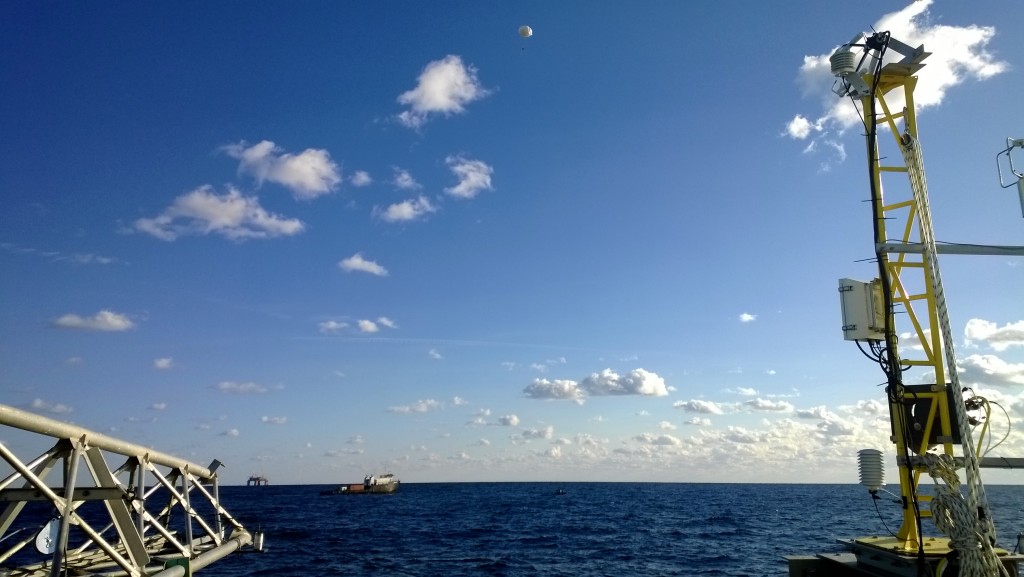Nathan Laxague
Salutations, blog-readers. The truth is out there!

The past several days have been a finishing-up of sorts. We finished assembling drifters. We finished the Aerostat drift-card imaging. We finished the large-scale drifter deployments.
The final Aerostat observations were, like their Phase 2 predecessors that I missed, aimed at getting near-surface currents from the motions of bamboo drift cards. These measurements represent a crucial piece of the LASER mission, especially as they relate to near-surface material transport.

During this stretch of time, my group made full use of the opportunity and gathered as much short ocean wave data as possible in addition to our usual complement of air-sea flux information. All of this information will eventually assist in the reconstruction of flows above and below the air-sea interface, a piece planted firmly in the small-scale end of the LASER scientific scope.

When the sun began to set, the cameras were turned off and the Aerostat was brought down. We were transitioning into the final stage of LASER. Flurries of e-mails were exchanged, all about the deployment site and grid scheme for our remaining payload of ~300 GPS-tracked drifters. The site chosen housed a number of interesting features, chief among which was the cold filament of water that had mushroomed into a mass of warm water and began to spin off 10km-scale vortices. This valuable information didn’t just fall out of the sky- it was collected via infrared sensor-equipped airplane by Jeroen Molemaker’s UCLA crew. For the deployment scheme, we settled on a “radiator” pattern that swept back-and-forth across part of the filament and centered itself on the main vortex. Approximately 11 hours into the overnight, 14-hour of deployment, we were left with this:

Which, at the time of this writing, looks a bit more like this:

The drifters east-southeast of the Mississippi River delta (under the orange plane triangles) were the ones we cast away last night. It’s difficult to convey much information this early, but the data collected by these drifters will shed a good deal of light on these dynamic submesoscale features that are so important in transporting material. At this point, both research vessels are going to once again take Bob Dylan’s advice and seek shelter from the storm (likely by the delta).
Nathan Laxague, signing off somewhere between missing breakfast and losing lunch.

